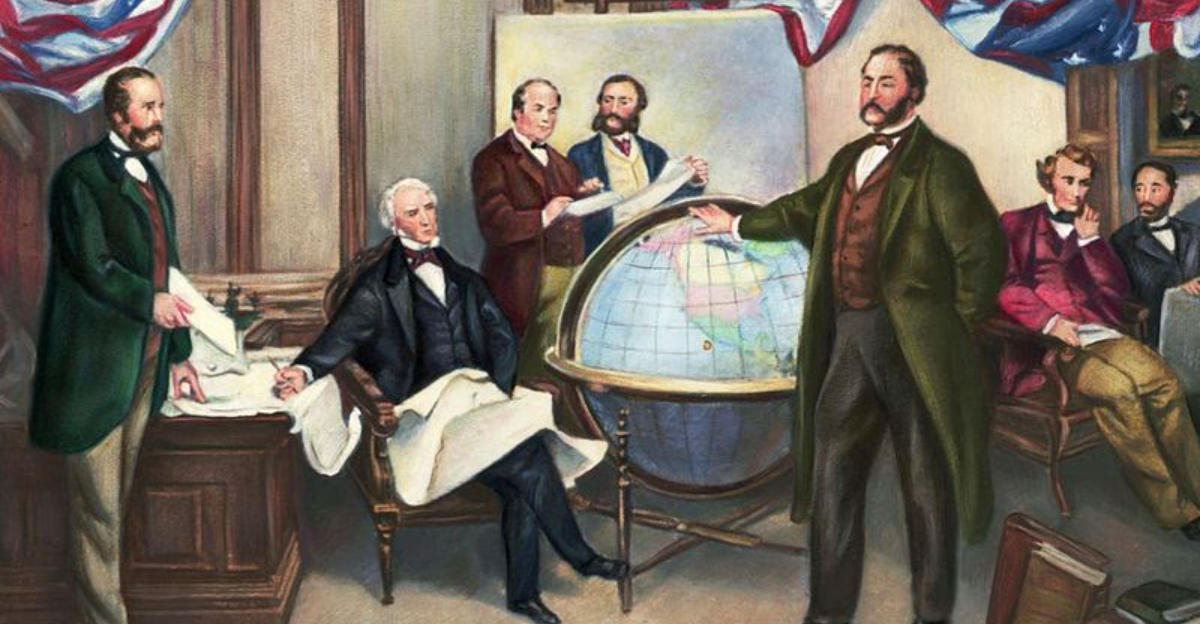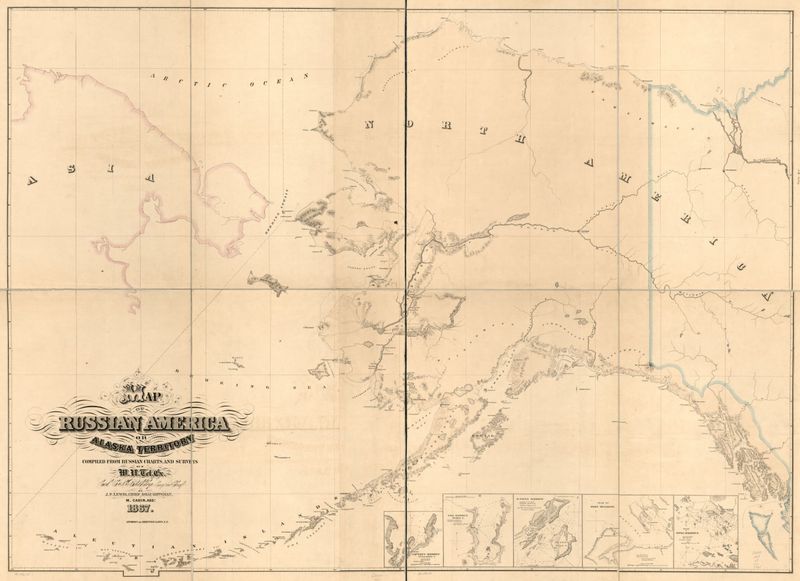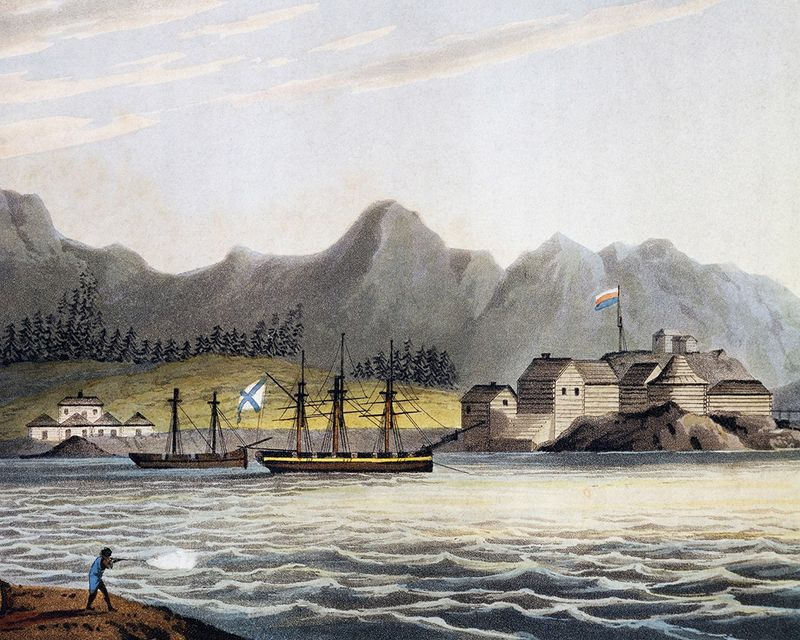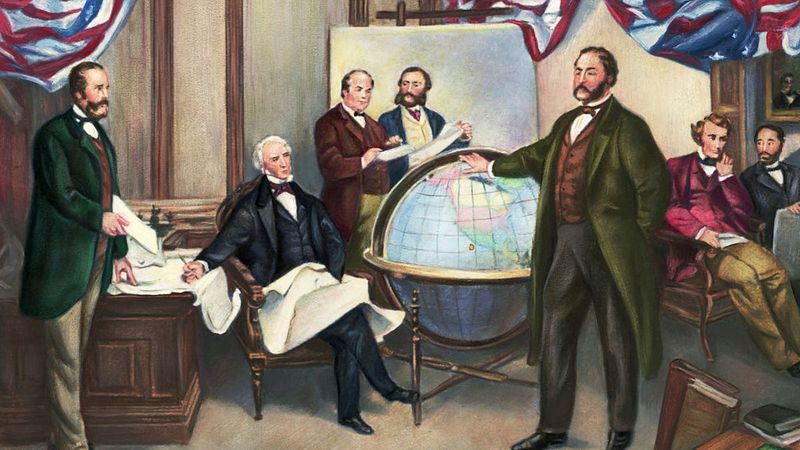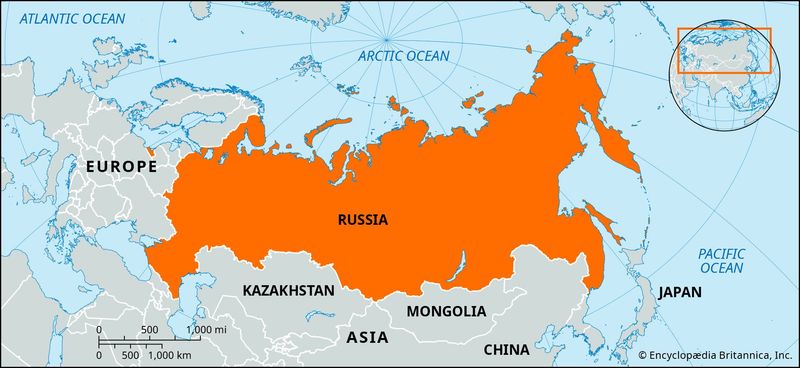The sale of Alaska by Russia to the United States in 1867 is a transaction rich with intrigue and unexpected motives. Behind this colossal land deal lied a mix of economic struggles, strategic calculations, and international diplomacy.
While today Alaska is deemed invaluable, its transfer was once seen as a mutually beneficial arrangement between Russia and the United States.
This blog post unravels seven fascinating facets of this historic exchange, shedding light on the factors that drove Russia to part with what would become one of America’s most resource-rich states.
1. Financial Strain
Struggling under the weight of economic difficulty, the Russian Empire saw Alaska as more of a financial burden than a boon. Maintaining such an expansive, distant territory drained the coffers without offering immediate returns.
Faced with mounting costs and an unsustainable financial situation, selling Alaska emerged as a pragmatic solution. The funds garnered from the sale could alleviate fiscal pressures back home.
Alaska’s untapped potential, unseen and undervalued, seemed dispensable compared to the pressing need for economic relief. Russia’s financial woes thus laid the groundwork for this monumental sale.
2. Strategic Concerns
Alaska’s remote location posed a significant strategic headache for Russia. The vast distances from the heart of Russian power made defending it a logistical nightmare.
In an era where territorial disputes were common, the Russian Empire feared that its grip on Alaska could easily slip, particularly to the British, its rival.
Faced with these strategic vulnerabilities, the decision to relinquish Alaska became not just a financial consideration but a defensive maneuver, as it reduced the risk of losing the territory to military conquest.
3. Limited Practical Use
In the 19th century, the true wealth of Alaska lay hidden beneath its icy facade. To Russian eyes, this wild expanse was more burden than bounty. Lacking the knowledge of its enormous natural resources like gold and oil, the land was viewed as largely unproductive.
Governing such a remote and seemingly barren territory stretched resources thin. The decision to sell was rooted in this misperception, as Russia sought to shed what was seen as a nonessential liability, unaware of Alaska’s future potential as a resource titan.
4. Fear of British Expansion
Post-Crimean War tensions left Russia wary of British intentions. The war, ending in 1856, had shown Russia the might of a British alliance, stirring fears of losing Alaska to Britain’s expanding empire.
To preclude such a loss, selling to the United States offered a diplomatic strategy to sidestep British encroachment. This move not only safeguarded Russian pride but also ensured that Alaska wouldn’t bolster British holdings.
The sale thus acted as a geopolitical chess move, counteracting potential British ambition with American partnership.
5. Favorable Diplomatic Relations with the U.S.
Russia’s warm diplomatic rapport with the United States played a crucial role in the Alaska deal. Seen as a counterbalance to British influence in North America, the U.S. was a natural ally.
The sale of Alaska was more than a financial transaction; it was a gesture cementing this transcontinental friendship. By transferring Alaska to a friendly nation, Russia hoped to maintain and even enhance its strategic positioning.
This cozy relationship assured both parties of mutual benefits, paving the way for a smooth and advantageous transaction.
6. Focus on Eastern Expansion
As Russia’s gaze turned eastward, its priorities shifted to the vast expanses of Asia. With Siberia and other territories in its sights, Alaska became less central to Russia’s ambitions.
The allure of rich lands closer to home drew resources and attention away from Alaska. Focusing on eastern expansion offered opportunities for consolidation and growth that Alaska couldn’t compete with.
This strategic pivot away from North America underlined Russia’s desire to capitalize on more immediate and accessible prospects, making the sale of Alaska a sensible choice.
7. Timing and Convenience
The Alaska sale was a swift affair, driven by mutual interests and a sense of urgency. Russia needed cash, and the U.S. wanted to expand. Negotiations, once initiated, progressed quickly, sealed by shared objectives that aligned perfectly in 1867.
This timely convergence of needs made the transaction convenient for both parties. The speed of the deal reflected the practical and opportunistic nature of the transaction, where both nations found precisely what they were seeking.
